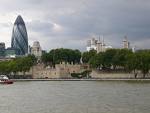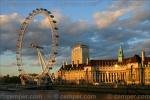I like the design too, but I can gurantee that the shops around the Apple store are going to hate it and that most of the community is going to be very pissed with Apple's arrogance with a store like that. Tourists will love it, but tourists dont buy computers and ipods, the people who live there are going to be the customers and that design really alienates their neighborhood. I dont know why the city approved that in the first place. The Regent store is a perfect example of what they should do to an area like that, obviously Apple must be using someone else for the Boston store.
This crap is going to hit the local papers Im sure, and it wont be the kind of bad press that generates sales.
How is it that you like the design, but that you feel it’s part of Apple’s arrogance, that it alienates [people in] the neighborhood, and that it will generate bad press for Apple?
Why must a building look like the buildings that surround it? And why is that the case even when the incoming building is attractive and interesting, perhaps functional?
I’m thankful that there are people who do not think as you do, who have a narrow definition, who say that things should stay as they are. It’s as if you long for stasis only and that if change is permissible it’s only permissible if it’s drawn out over time, perhaps so nobody notices it.
And instead of allowing their to be a diversity of building esthetics, and instead of allowing the neighborhood to evolve (even if it’s one building at a time), you demand that the government step-in on your behalf to block development, to eschew newness, to enforce your model of the extent to which the buildings of a neighborhood must conform.
Should the neighborhood be the same, for the most part, from here on? Like in 2100 or 2200 or 2500 should its Victorian brownstones remain untouched, preserved, or perhaps only so slightly updated and modified?
By your logic Back Bay never would have been created in the first place. Those involved in creating it in the late 1800s should have said to themselves that the area is a tidal bay and must remain so. The government should have stepped in to enforce that viewpoint.
In fact, the neighborhood might be better off if steps were taken to return to that condition, which would start, obviously, with raising everything that’s already there. So much for an Apple Store.


 Stores.... they are amazing!
Stores.... they are amazing!




